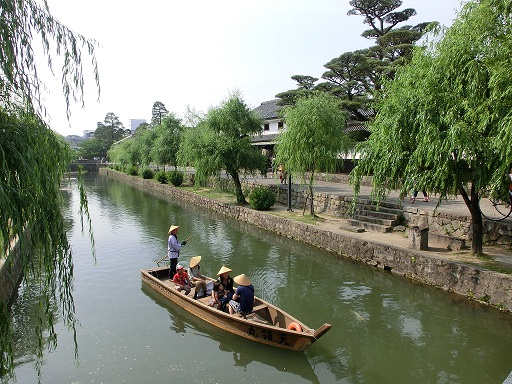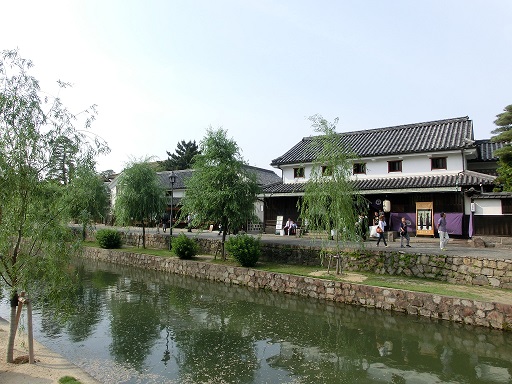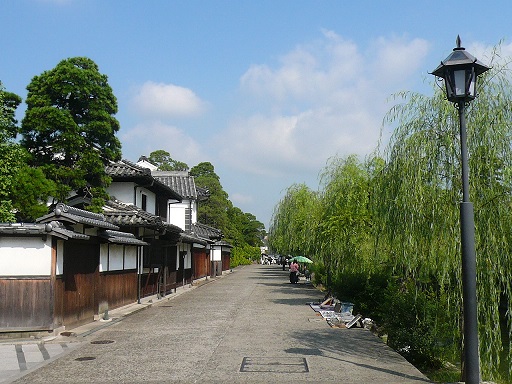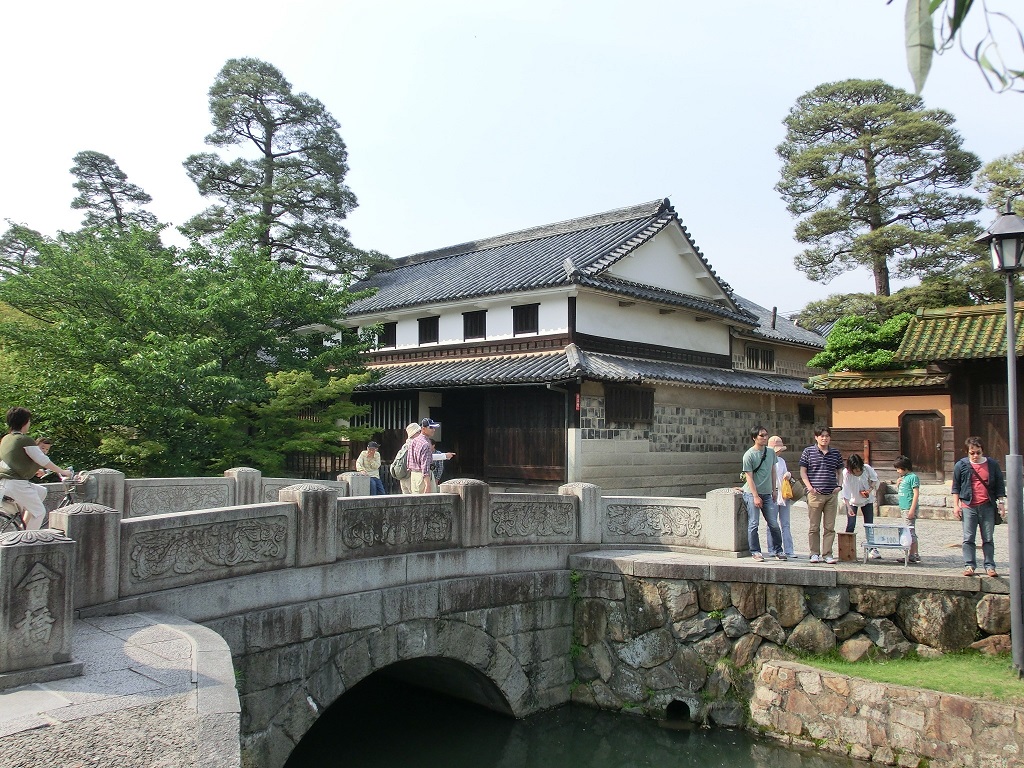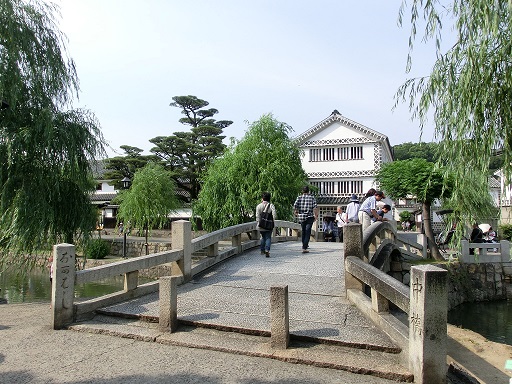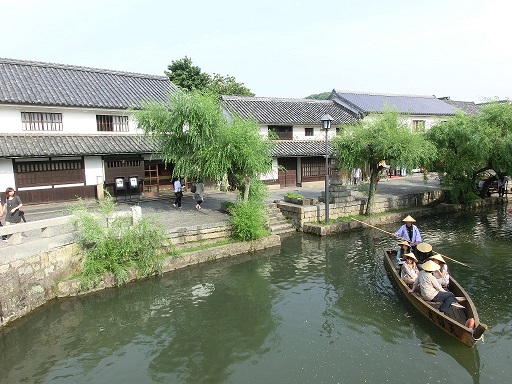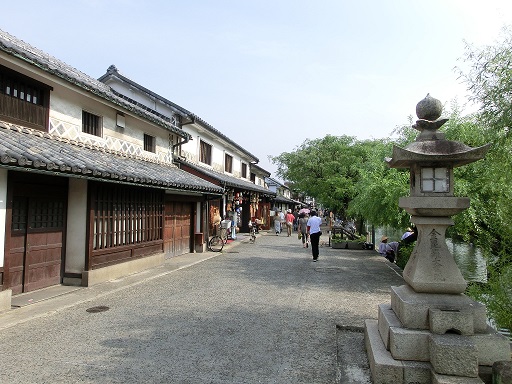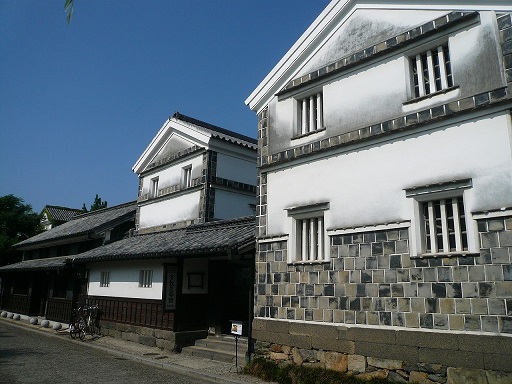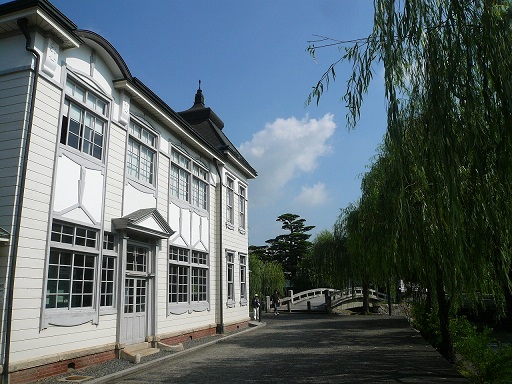|
"Bikan" Historical Quarter in Kurashiki

Kurashiki is located approximately 20 kilometers to the west of Okayama City. During the Edo Age (1603 - 1868) , the Kurashiki Area was governed directly by "Edo Bakufu", which was the central government of Japan. At that time, farmers were forced to pay tax with rice. Many rice warehouses were built in Kurashiki.If you walk approximately ten minutes from Kurashiki Station to the south, you will arrive at the entrance of the historical district of Kurashiki, named "Bikan" Historical Quarter. 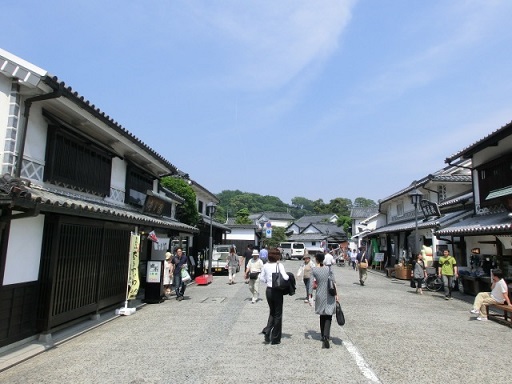
In the "Bikan" Historical Quarter, a moat is located at the middle of the area. |
